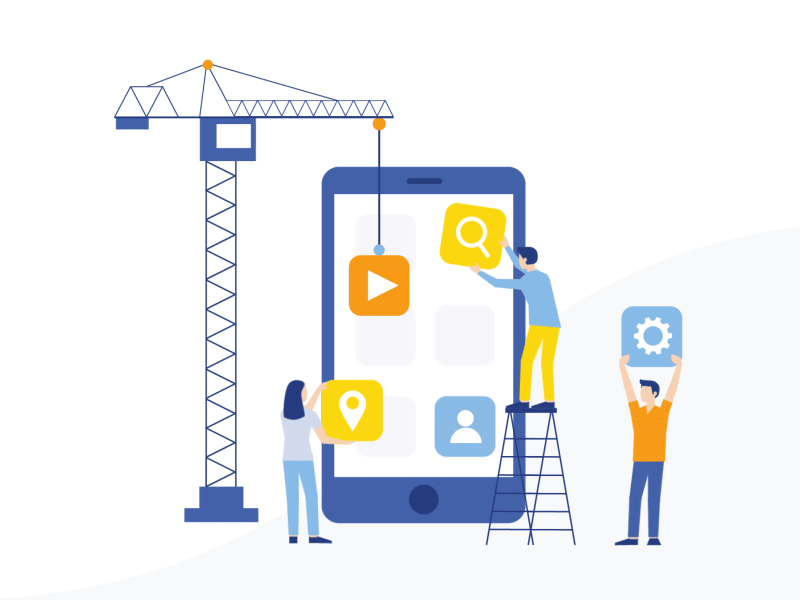
Android Apps Design & Development
We live in an era where thousands of mobile applications are created for submission on the Apple Store and
Google Play on a daily basis. These apps have different focus verticals, including games, social networks, ECommerce and more. Though these apps are different from one another, the methodology for the creation or the mobile app development process interconnects them widely with each other.
As part of this, the Android app development process is a unified initiative that involves the design, development and post-deployment maintenance & support for the app. To understand it better, we have segregated the app development process into a set of events across different phases of app development, including:

Android Application Development Process Steps
Conceptualization
Refining the app idea into a solid base of the application is the first and most significant stage in the development process of Android application. The initial analysis of the app must include the demographics, behavior patterns, and goals of the buyer persona as all the other stages of app creation will depend on the said traits of users. ...During this stage, all the necessary groundwork for the following process is laid down. It is beneficial to do substantial research and brainstorming before jumping to the next step. Another pivotal part of this stage is the competitor analysis to figure out what features can make the app stand out in the market.Read more
Design
In this phase of the Android app development, the UX (user experience) designer architects the design elements' interaction, while the UI (user interface) designer builds the app's person by keeping in mind the modern user's preference. Application designing is a multi-step process for drawing clear visual directions and offering an abstract of the final product.
Development
During this stage, a working prototype is developed to validate the functionality, assumptions, and understanding of the project scope. The app goes through a broad set of steps as the development progresses from core functionality development to light testing and then releasing the app for an external group of users for further field testing the concept.... If an application has a broader scope than the usual, the creation process gets divided into smaller modules through agile methodology, and the entire mobile app development process is applicable for each of these small partsRead more
Feasibility Assessment
Enterprises can gain a clear understanding of the app visuals through wireframes, detailed sketches of the conceptualized product to refine their ideas and arrange design components in a precise manner. To assess whether the concept of the application is technically feasible or not, the app developers need access to public data through public APIs ... sourcing. By the end of feasibility testing, the team may have a completely different app idea if their original functionality is not feasible.Read more
Testing & Deployment
One of the critical components of the app development process, it is a good idea to test at early stages, often for usability, interface & security checks, stress, compatibility, and performance. After fixing the bugs, the app moves to the deployment phase and is ready for release via a formal launch. Different application stores have different policies of application launch, and therefore the deployment phase plan is aligned according to the app store. However, keep in mind that this is not the end.
Android application development service does not end with the launch. As the application gets in the users’ hands, feedback will start pouring in, and enterprises will need to incorporate the feedback to develop the future versions of the app. As soon as the first version of the app is out, the app development cycle commences incorporating new updates and features. As soon as the first version of the app is out, the app development cycle commences yet again incorporating new updates and features, by ensuring that the organization has the required resources to maintain the viability of the product. It is about sustaining a long-term commitment that is beyond the significant amount of money invested in building the said digital product.
All Rights Reserved © Satvat Infosol Pvt Ltd .2023





